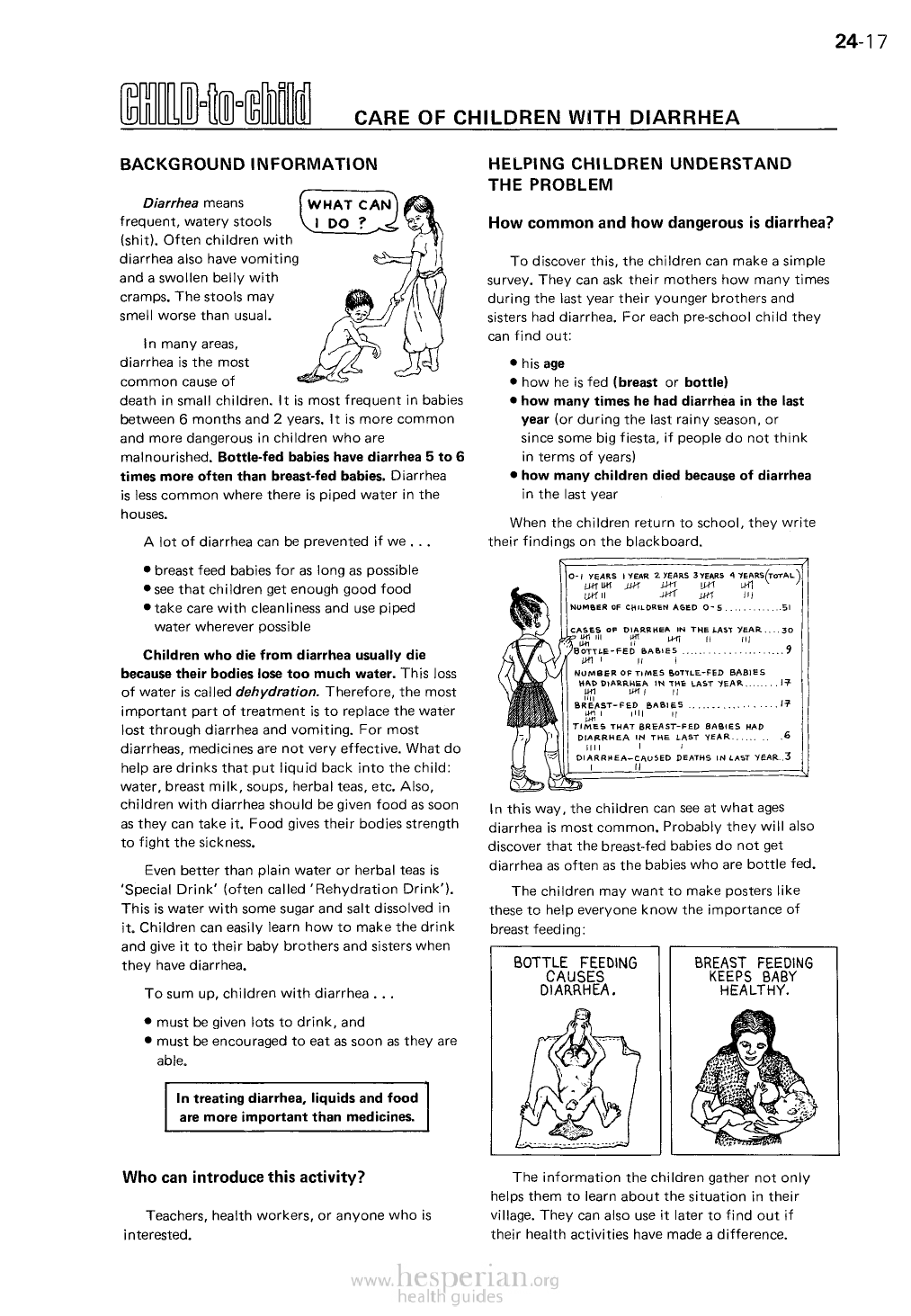
24-17
CARE OF CHILDREN WITH DIARRHEA
BACKGROUND INFORMATION
Diarrhea means
frequent, watery stools
(shit). Often children with
diarrhea also have vomiting
and a swollen belly with
cramps. The stools may
smell worse than usual.
In many areas,
diarrhea is the most
common cause of
death in small children. It is most frequent in
babies between 6 months and 2 years. It is more
common and more dangerous in children who are
malnourished. Bottle-fed babies have diarrhea 5
to 6 times more often than breast-fed babies.
Diarrhea is less common where there is piped water
in the houses.
A lot of diarrhea can be prevented if we . . .
• breast feed babies for as long as possible
• see that children get enough good food
• take care with cleanliness and use piped water
wherever possible
Children who die from diarrhea usually die
because their bodies lose too much water.
This loss of water is called dehydration. Therefore,
the most important part of treatment is to replace
the water lost through diarrhea and vomiting. For
most diarrheas, medicines are not very effective.
What do help are drinks that put liquid back into
the child: water, breast milk, soups, herbal teas,
etc. Also, children with diarrhea should be given
food as soon as they can take it. Food gives their
bodies strength to fight the sickness.
Even better than plain water or herbal teas is
‘Special Drink’ (often called ‘Rehydration Drink’).
This is water with some sugar and salt dissolved
in it. Children can easily learn how to make the
drink and give it to their baby brothers and sisters
when they have diarrhea.
To sum up, children with diarrhea . . .
• must be given lots to drink, and
• must be encouraged to eat as soon as they are
able.
HELPING CHILDREN UNDERSTAND
THE PROBLEM
How common and how dangerous is diarrhea?
To discover this, the children can make a simple
survey. They can ask their mothers how many times
during the last year their younger brothers and
sisters had diarrhea. For each pre-school child they
can find out:
• his age
• how he is fed (breast or bottle)
• how many times he had diarrhea in the
last year (or during the last rainy season, or
since some big fiesta, if people do not think
in terms of years)
• how many children died because of diarrhea
in the last year
When the children return to school, they write
their findings on the blackboard.
In this way, the children can see at what ages
diarrhea is most common. Probably they will
also discover that the breast-fed babies do not get
diarrhea as often as the babies who are bottle fed.
The children may want to make posters like
these to help everyone know the importance of
breast feeding:
In treating diarrhea, liquids and food
are more important than medicines.
Who can introduce this activity?
Teachers, health workers, or anyone who is
interested.
The information the children gather not only
helps them to learn about the situation in their
village. They can also use it later to find out if
their health activities have made a difference.